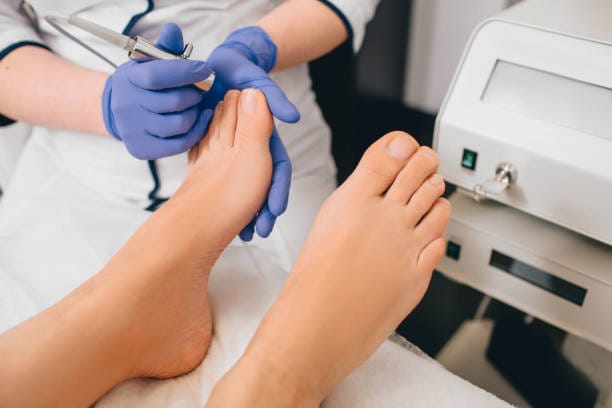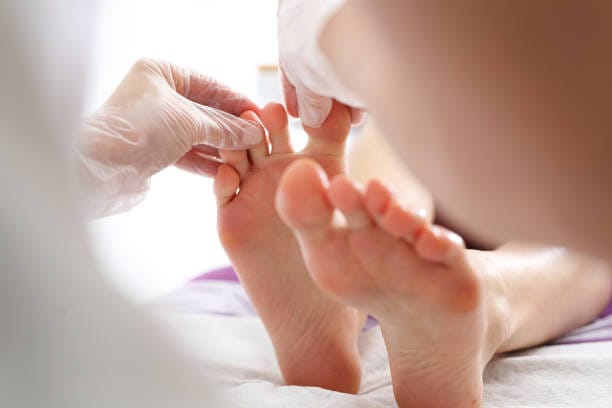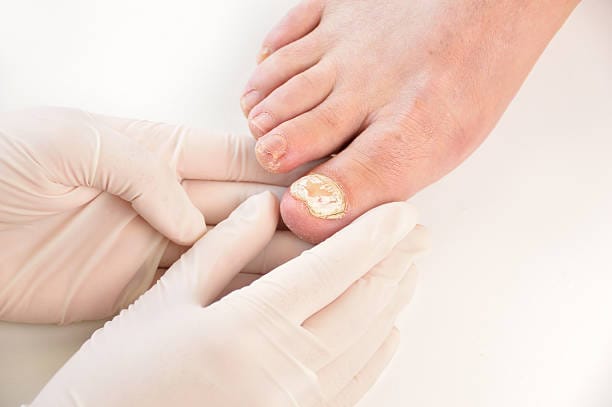Best Nail Fungus Treatments That Actually Work

Nail fungus is a condition that affects the nails, it is common, and frustrating. Often starting out as a small, white or yellow spot, this condition can get worse and lead to thick, discolored, and crumbling nails. But untreated nail fungus is not life threatening and can be uncomfortable, embarrassing, and even painful. Gratefully, there are many treatments. In this article, we’re going to go over the best nail fungus treatments that actually work so that you can choose the solution that works for you and return to having healthy, clear nails.
Understanding Nail Fungus
Knowing more about nail fungus can let you know what treatment would be the most effective and how to prevent this disease. We’ll take a look at what causes nail fungus, who is at risk, and the early signs to watch for.
What is causing Nail Fungus?
Fungi are largely responsible for causing nail fungus and fungi called dermatophytes are responsible under skin, hair and nail infections. Warm and damp, these fungi love to live and thrive on keratin, a protein of nails. If untreated, once they invade a nail, they can spread deeper and the nail can thicken and become brittle.
Common Risk Factors for Nail Fungus:
• Walking Barefoot in Public Areas: Common areas like locker rooms, showers and swimming pool are happy places for fungi.
• Injury to Nails: Fungi can get into your body through even the tiniest of nail trauma.
• Sweaty Feet and Closed-Toe Shoes: In fact, these are a perfect environment for fungi to grow.
• Underlying Health Issues: Nail fungus is more likely to thrive in people with diabetes, a compromised immune system, or circulatory problems
• History of Athlete’s Foot: If not treated, this type of infection of the skin can spread to the nails.
Knowledge of these risk factors will allow you to follow some preventive habits and seek early treatment if you are at high risk.
Symptoms and early signs of nail fungus
Nail fungus is easy to identify and, if caught early enough, successful treatment is more likely than it would be if left untreated. Here’s what to look for:
• Discoloration: The nail can start to turn white, yellow or brown.
• Thickening: In time, infected nails may become thicker and harder to trim.
• Texture Changes: In fact, infected nails can become brittle, crumbly and rough.
• Odor: Many infections can smell mild to strong.
• Nail Separation: In severe cases the nail may start to peel away from the nail bed.
If you see any of these signs, begin treatment early to stop the infection from getting worse and spreading to other nails.
The Best Nail Fungus Treatments That Right
Fighting nail fungus has several treatments, from over-the-counter products to advanced therapies. We discuss the best nail fungus treatments and how they work.

1. Over the Counter (OTC) Treatments
But over the counter treatments are simple and inexpensive for mild nail fungus. If the infection hasn’t progressed to deeper layers of the nail, these products can help control the fungus.
Fungal Creams and Ointments
For mild infections, the best treatment consists of OTC antifungal creams. The active ingredients of these creams are clotrimazole or terbinafine, which are to kill fungi on the nail surface.
How to Use:
• Your nails should be clean and dry.
• If it's on the skin around the nail and on the nail, apply a thin layer of cream over the affected area.
• For several weeks, or as directed on the packaging.
While creams can be helpful, they don’t have much penetration, so they work best if your infection is on the surface. Prescription treatments may be needed for deeper infections.
Medicated Nail Polish
If you’re dealing with mild cases, medicated nail polish, such as ciclopirox, is a popular OTC option and is actually one of the best nail fungus treatments. The lacquer is a protective layer that releases antifungal ingredients that will gradually attack the infection.
How to Use:
• Use the polish every day, over previous applications.
• Take off all layers and start over after a week.
The medicated polish can work but removing it can take up to 6 – 12 months. It’s a particularly perfect choice for people who like a low maintenance treatment option.
2. Prescription medications for the best nail fungus treatments
If OTC options don’t work, prescription treatments follow. And these are generally stronger, and usually are designed so that they can stand up to more persistent infections.
Oral Antifungal Medications
The best nail fungus treatments for moderate to severe infections are oral antifungal medications. Such medications as terbinafine and itraconazole also enter the bloodstream and fight the fungus from the inside out. Treatments are often oral, and require continuous use for 6-12 weeks.
Advantages of Oral Medications:
• High effectiveness: They go all the way into the nail bed and hit the entire infection.
• Convenient: The oral medications only have to be taken daily and are not applied to the direct nail.
Drawbacks and Side Effects:
• Potential side effects: They could include liver toxicity, stomach problems, and headaches.
• Not suitable for everyone: You may not love it if you have liver issues, or other medical conditions.
Prescription Nail Lacquers
If you don’t want to take an oral medication, prescription strength nail lacquers like efinaconazole are another option. Stronger than OTC polishes, these lacquers are good for infections that haven’t gone too deep.
How to Use:
• As told by a doctor, apply the lacquer to affected nails.
• It’s a daily application, often repeated for several months.
Prescription lacquers are usually well tolerated and are an effective choice for some milder cases.
3. How Laser Therapy Can Be Used for Nail Fungus
Laser therapy is a preferred option of the best nail fungus treatments and is most preferred in those who don't want to go through an invasive procedure. Laser treatments are the use of focused light to heat and destroy the fungus, without damaging surrounding tissue. Sessions typically run for 15 to 30 minutes, but people average 2 to 3 sessions.
Advantages of Laser Therapy:
• Minimal downtime, very quick sessions.
• A good option for allergy sufferers. No medications necessary.
• It encourages faster nail growth, and recovery.
Disadvantages of Laser Therapy:
• Costly: Some laser treatments can cost hundreds of dollars per session and some are expensive.
• Limited insurance coverage: Laser treatments for nail fungus aren’t usually covered by many insurance plans.
The promise of laser therapy as a treatment for people who haven’t responded to creams or medications is not always possible because of cost.
4. Home Remedies for the best nail fungus treatments
Home remedies are an affordable, natural alternative to mild nail fungus. Results are variable, but some remedies have found effectiveness in managing symptoms, or in slowing fungal growth.

Tea Tree Oil
You may have heard of tea tree oil as one of the best nail fungus treatments you can try at home, as it is natural antifungal and antibacterial. To get the best result, you want to use pure tea tree oil.
How to Use:
• Get some tea tree oil, apply a few drops on cotton swab.
• Use Dab it twice a day on the affected nail.
• Improvement takes weeks or months – be consistent.
Vinegar Soaks
Apple cider vinegar, for example, makes a tough environment for the fungi that cause infection to grow. Vinegar soaks are not a cure all to the infection, but can be a great supplementary treatment.
How to Use:
• Pour equal part of the vinegar and warm water in a bowl.
• Daily soak the affected nails for 15 to 20 minutes.
• Afterwards pat dry and make sure nails are moisture free.
For early-stage infections or one part of a treatment plan, home remedies can work. But it may not be enough for serious cases.
5. Surgical and other Clinical Procedures for the best nail fungus treatment
Clinical procedures may be necessary to clear the infection in severe, persistent nail fungus.
Nail Removal
For severe cases, the best nail fungus treatment is often nail removal, partial or complete. The new nail will grow back in 6-12 months and it is done under local anesthesia. Other treatments haven't worked and this procedure is often recommended.
Light-Based best nail fungus treatments
Besides lasers, other light-based therapies such as photodynamic therapy (PDT) combine light and photosensitizing agents to attack and destroy fungal cells. Another option for people not responding to other treatments is these therapies—though not as common.
Choosing the best nail fungus Treatment for You
Selecting the best nail fungus treatment depends on various factors:
• Severity: Mild infection may be treated with OTC products and home remedies, but prescription medications or laser therapy are needed for more advanced cases.
• Lifestyle and Convenience: These may be more convenient for those with busy lifestyles — they might need to have laser treatments or oral medications.
• Health Factors: Not every one of us may be suitable for oral medications. According to a doctor, people with liver issues or on certain medications should discuss options.
Your best nail fungus treatment is something you can consult your healthcare professional about.
Preventing Nail Fungus Recurrence along with the best nail fungus treatments
However, once your nails are clear of growth you need to take steps to avoid a recurrence. Here are some effective ways to maintain healthy nails and prevent future infections:
Practice Good Foot Hygiene: Wash your feet regularly, dry your feet well and keep your nails trimmed.
Wear Breathable Shoe and Socks
Preventing nail fungus means wearing shoes that allow your feet to breathe. Synthetic closed-toe shoes can trap in moisture and heat, which offers a good chance for fungi to grow and breed in. Instead, go with breathable leathers or mesh materials for shoes for the same purpose—all allowing air circulation and preventing your feet from remaining too moist. Wool or synthetic blend socks made to pull moisture away from skin. Before and especially after exercising, change socks frequently and also when your feet get sweaty.
Do Not Walk barefoot in public areas
Fungal infections are very contagious, and common areas such as locker rooms, pools, and public showers, are just some of the places you can pick up fungi. In these areas, always wear flip flops or sandals to reduce your exposure. If you do find yourself walking barefoot, you should wash your feet really well and dry them all the way through before putting your socks and shoes on.
Don’t Use Personal Foot Care Items
Fungal infection can be spread when you share personal items like nail clippers, towels or shoes. Make sure you’re using your own nail care tools and cleaning them regularly. When you go to a nail salon, ask to see that the tools are appropriately sterilized before using them. When it comes to cross contamination, some salons provide disposable items such as emery boards and nail buffers; however, this isn’t exactly ‘going green’.
Take Proper Care of Your Nails
Keeping your nails clean and trimmed is important to keeping your nails healthy and to avoid fungal infections. It also keeps nails from getting overgrown or damaged and, in turn, ready for fungus to get in. It is important not to cut the nails too much, or too deep, as this can hurt to the point of an infection or ingrown nails. To prevent fungus entering under jagged edges, don’t trim nails straight across.
Feet and nails moisturizing
It's important to keep feet dry to avoid fungal growth, but it’s also crucial to keep moisture in nails and surrounding skin to prevent cracking. Fungi can easily enter the body through cracks in dry, cracked skin. Prevention for this may be accomplished by using a foot cream or lotion. Make sure to use the lotion on your cleaned feet but don’t over moisturize, as over moisturization will allow the right environment for the growth of fungus.
Treat any medical conditions timely
Because an athlete's foot can cause nail fungus if left untreated, it’s best to get this problem under control as soon as you’re aware of it. If you have symptoms like itching, redness or peeling skin between the toes then apply an antifungal treatment as soon as possible. Preventing the spread of athlete’s foot to the nails will greatly lessen your chances of developing nail fungus.
Building Your Immune System
Fungal infections can be fought off by a healthy immune system. A balanced diet full of vitamins and minerals and regular exercise will support your immune health, as will getting enough sleep. Secondly, managing conditions such as diabetes or circulation problems helps reduce your risk of fungal infection because these conditions can make your body less able to withstand such attacks.
Keep Your Feet Dry
The best way to prevent nail fungus is to make sure your feet remain dry. After bathing, dry your feet well, between the toes. If you tend to sweat a lot then use foot powder to keep your feet dry and free from retaining moisture. Don’t wear the same pair of shoes each day to let them breathe, and keep changing your socks.
Final thoughts
Nail fungus is an embarrassing and frustrating condition that can leave you scratching your head and your nails in despair, but it doesn’t have to be that way. No matter if you begin by going the over-the-counter route, try out prescription medications, or consider laser therapy, there really is a treatment that will be able to meet your needs.
And early detection is vital! If you catch the initial signs of nail fungus, it can be diffused and worsened before it takes hold. Not only that, but there are a few simple habits you can adopt that involve things like good foot hygiene, wearing breathable shoes, and keeping your nails hydrated which will help prevent future infections.
The treatment you choose depends on how bad your condition is, your lifestyle, and your general health. This should be considered always and should be done with the help of a healthcare professional. If you have nail fungus and aren't sure how to treat it, a healthy approach to restoring the health of your nails can enable you to enjoy life free of the discomfort and embarrassment of nail fungus.
Why Choose Revitalize London
Revitalize London is an expert, personalized care service for the best nail fungus treatments where we combine the latest treatments with a holistic approach to get the desired results. Our team of experienced professionals work to develop the best tailored solutions, whether through advanced laser therapy, or clinically proven medications, all with the goal of targeting and obliterating the fungus at its source. We care about comfort, safety, and long-term prevention, and guide you in every step of the way. Revitalize London is your reliable partner in getting rid of nail fungus and having healthy, clear nails with our state-of-the-art facilities and dedication to reaching healthy, clear nails. Go with us for compassionate, results driven, effective care.



